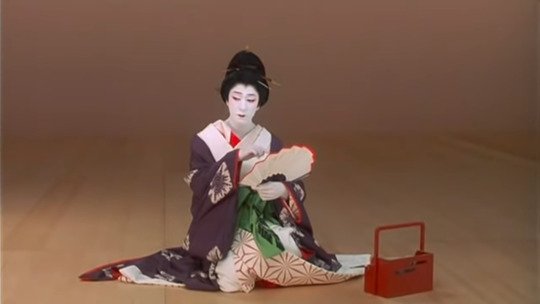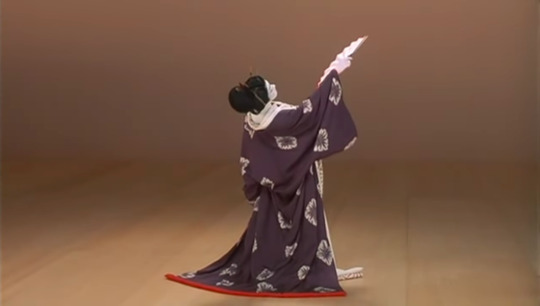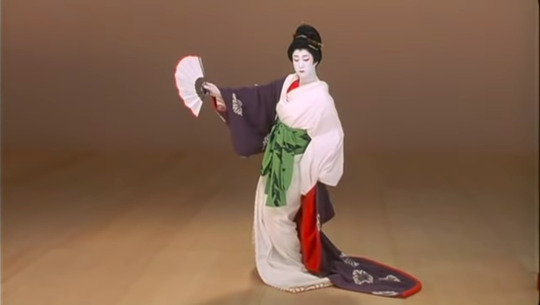#Tamasaburo Bando
Photo

by Kishin Shinoyama / 篠山紀信
Tamasaburo Bando V, Kabuki actor / 五代目 坂東 玉三郎
From the book: Tamasaburo Bando / 坂東玉三郎 (1978)
70 notes
·
View notes
Text

Tamasaburo Bando - The Tale of Himeji Castle (1995)
7 notes
·
View notes
Photo
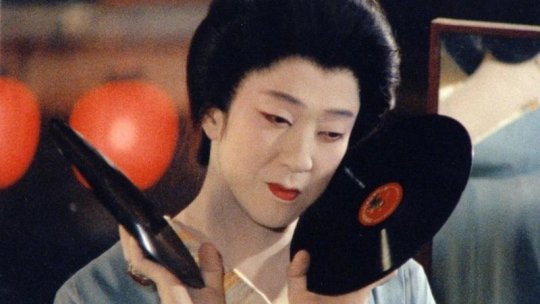
Daniel Schmidt
- The Written Face
1995
#daniel schmidt#written face#the written face#tamasaburo bando#bandō tamasaburō v#bando tamasaburo v#五代目 坂東 玉三郎#坂東玉三郎#documentary#1995#vinyl#kabuki
74 notes
·
View notes
Text

アサヒカメラ 1977年12月増大号
朝日新聞社
表紙=「坂東玉三郎」写真・大倉舜二
#アサヒカメラ 1977年12月増大号#ASAHI CAMERA#asahicamera#tamasaburo bando#坂東玉三郎#shunji okura#大倉舜二#anamon#古本屋あなもん#あなもん#book cover
27 notes
·
View notes
Text
youtube
Yo-Yo Ma - Inspired by Bach
Struggle for hope with Tamasaburo Bando - Bach - Suite No. 5 for Unaccompanied Cello
希望への苦闘~バッハ: 無伴奏チェロ組曲第5番~ (1996)
25 notes
·
View notes
Text

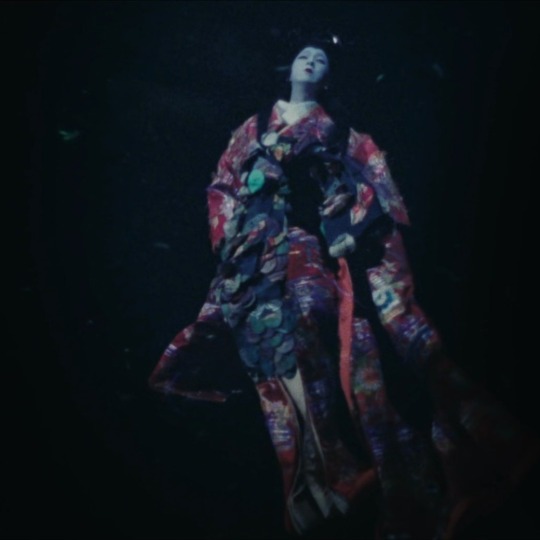
Demon Pond 夜叉ヶ池 (Masahiro Shinoda, 1979)
#Demon Pond 夜叉ヶ池#Demon Pond#夜叉ヶ池#Masahiro Shinoda#Yashagaike#Bando Tamasaburo#tamasaburo bando#kabuki#japanase movie#japanase cinema#japanese folklore#beauty#dream#fantasy
2 notes
·
View notes
Photo
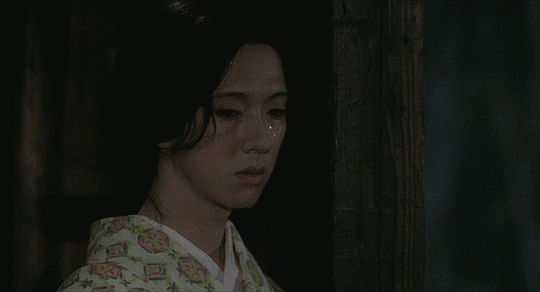

Yashagaike - Masahiro Shinoda 1979
39 notes
·
View notes
Text

Ebi Zori - Backbend
The actor Bando Tamasaburo appears as the spirit of the Cherry Tree in the Kabuki play "Seki no To" performing a backbend known as Ebizori (literally prawn bend).
The tree is threatened by an evil character, Sekibei, wielding a huge axe. She bends like a prawn to escape the enormous blade.
#art#japan#japan art#kabuki#kabuki theatre#bando tamasaburo#japanese culture#japanese art#ukiyoe#japanese theatre#woodblock#woodblock print#ukiyo e#asian art#paul binnie
4 notes
·
View notes
Photo

A screening of 4 gems of cinema Kabuki, starring Kyoka Izumi and Tamasaburo Bando
92 notes
·
View notes
Note
why is sanzang often a woman in japanese media? even dbz bulma is his female counterpart.
I can’t say for sure why this all began but I can say that it was most likely because of the first popular Japanese version to do it.
Monkey Magic (1978) also known as Saiyuki isn’t the first Japanese Xiyouji content but it was definitely one of the most influential since many Japanese media followed its example and had Sanzang be a woman. Most of this is parodies of the show, directly influencing it, or rather having Sanzang be the token girl in their product.
Before the TV series was produced, the director planned to turn it into a movie and have it in a kabuki style. He wanted Tamasaburo Bando to play the role of Tang Monk (Sun Wukong is Wakayama Tomisaburo, Zhu Bajie is foreign sumo wrestler Takamiyama Daigoro, and Sha Monk is Nakadai Tatsuya), But they couldn't reach an agreement and didn't hire him. Later, they re-planned the cast and boldly hired women. After using Natsume Masako, the response was surprisingly great. Later versions of Tang Monk were all played by female actors as well.
Some viewers may think that Tang Monk in the play is a woman because of Natsume Masako. But the intention of the show is that it the actress was playing a male role. Later Japanese remakes also used this setting casting the actor of Master Tripitaka as female. The first episode of Journey to the West was broadcast on Japan Television from October 1, 1978 to April 1, 1979, with a total of 26 episodes. Because the series is very popular in Japan, The Japan Television Bureau produced and broadcast 26 episodes of "Journey to the West II" from November 11, 1979 to May 4, 1980.
On the other hand, in China, in case of making Master Tripitaka a girl, others commented that it was tampering with the original work. certainly, In this work, Master Tripitaka was not set as a female; it's just because the actress played a male role, so it's a misunderstanding.
I can’t say for certain why they made Sanzang a girl in the 1970s but the best I can say is that it could follow that more Japanese humor of having a “damsel in distress” tv trope since that was pretty common around that era. It could be that the producers were trying to have that angle of showing Sanzang as a younger boy since women did play male youth often enough in older films, it certainly wasn't unheard of. And that only later adaptions tried to go for a romance angle considering that there are no real female leads and it was highly doubtful they would have a male romance. I haven’t watched the show myself so I can’t be 100% certain just based on what clips I have seen.
But needless to say, it’s because of that version we see so many girl Sanzangs in Japanese media, and I honestly don’t know if maybe another version down the line could’ve done the same gender swap and be just as influential or not.
#anon ask#anonymous#anon#jttw#journey to the west#sun wukong#xiyouji#ask#tang sanzang#monk tripitaka
12 notes
·
View notes
Text
Just watched Demon Pond (夜叉ヶ池), a Japanese film released in 1979. And wow it just reminded me of why I haven't felt I've truly loved a film in years: I have not watched 1970s Japanese cinema in years. Just 2 hours of pure imagination. The singing woman and the white-faced demon are both played by the same onnagata (male Kabuki actor), Bando Tamasaburo
18 notes
·
View notes
Photo

Kabuki actor Tamasaburo Bando. (photographed by Takashi Okamoto)
11 notes
·
View notes
Text
Kabuki is an inherited profession, and although there is less pressure than in the past, the male children of star actors are still expected to follow in their fathers' footsteps and become Kabuki actors. Children usually make their debuts between the ages of five and eight and begin a long process, often lasting until middle age, of taking names of increasingly higher status until they achieve the highest rank open to them. This process and the ceremony that accompanies it is called shumei.
Although Kabuki actors have several names—a real name as a private citizen as well as a yago, or acting-house name—it is their stage name that is most important. In the case of the stage name Nakamura Utaemon VI, for example, Nakamura is the family name, Utaemon the forename, and VI means that he is the sixth person in Kabuki history to hold that name. It is usual, however, to refer to the actor only by his forename. The surname, known to all and common to many other actors, is omitted; and generation numbers are used only to refer to actors no longer performing. (…)
As in other traditional Japanese arts, Kabuki actors make their debuts as children; either by birth or adoption, they join one of the Kabuki "families." The most important families are Bando, Ichikawa, Ichimura, Kataoka, Matsumoto, Nakamura, Onoe, and Sawamura. A child will be given a low-ranking forename, and then, depending on the line open to him, will progress to names of higher rank. Depending on the availability of a name, a shumei is usually decided by the actor's seniors and by the Kabuki management. The decision is announced to the Kabuki world, first of all in the press, and again a few months later in a special shumei performance in which the actor plays a leading role. If the name is of great importance, a formal stage announcement known as a kojo will also be part of the program. (…)
Should an actor have several sons there may not be enough names available to go around, even a low-ranking one. In this case either a currently unused name from the past or the child's real forename may be used. (…) An actor can keep a new name all his life, until he hands the name to his own son who then becomes nidai-me, "the second." Thus a new acting line is born. This was the case with Onoe Tatsunosuke I, who died in his early forties, and his own son has now become Tatsunosuke II.
A shumei can impose a great artistic burden on the actor, particularly if the new name has a long historical background. The succession to a new name can act as an inspiration as an actor achieves greater status and is given more important roles as he takes his turn in the continuation of a long tradition.
Even children who appear at first to have little talent will be led through the shumei system and may not, in fact, achieve greatness as actors. In this case the highest names will be withheld. However, there are many cases in which the award of a prestigious name actually has inspired an actor to new artistic heights.
A system of adoption also exists, and it is quite common for an actor with no male children to take the second or third son of another actor as his student, or deshi. Adoptions from outside the Kabuki world, however, are rare, although there is one notable exception in the present Bando Tamasaburo V.
A kojo is usually held to announce an actor's succession to a new, higher ranking name, the so-called shumei, although occasionally it may commemorate a particular event such as the anniversary of the death of some great actor of the past. A shumei kojo is the most common, however, and the newly named actor will be introduced either by an elder relative or by a very high-ranking actor. All the other actors will then, in turn, raise their heads to add their congratulations. Finally the newly named actor, in language of great formality, asks the audience for its support and patronage and promises to do his best as he embarks on this new stage in his career. The senior actor then calls on all corners of the theater for support, and the actors again bow to the audience to bring the kojo to an end.
Occasionally a kojo may actually occur during the course of a play. This is often done when the child of a ranking actor is making his debut in one of the many koyaku, child roles. At a suitable moment the actors drop out of character, kneel before the audience, introduce the child, and ask for the continuation of the audience's patronage. The formalities over, the leading actor will then say, "Well, let us get on with the play!" and the performance will continue.
The shumei kojo of the Ichikawa Danjuro line of actors is the most formal of all, and at the end of the kojo the new Danjuro is presented with a congratulatory scroll on a small wooden stand and is called on to demonstrate his skill at nirami, the furious crossed-eye pose seen in a mie.
0 notes
Photo

夜叉ヶ池
松竹株式会社事業部
原作=泉鏡花、監督=篠田正浩、出演=坂東玉三郎・加藤剛・山崎努 ほか
#夜叉ヶ池#kyoka izumi#泉鏡花#masahiro shinoda#篠田正浩#tamasaburo bando#坂東玉三郎#加藤剛#山崎努#anamon#古本屋あなもん#あなもん#映画パンフレット#movie pamphlet
94 notes
·
View notes
Photo
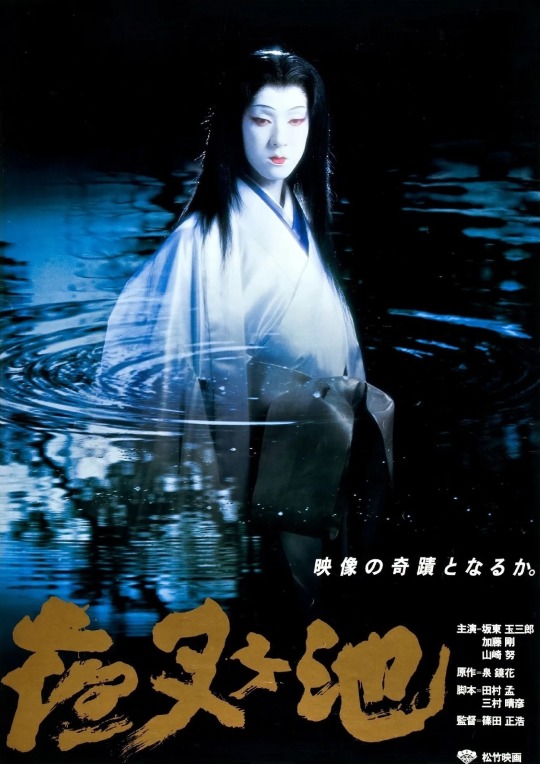
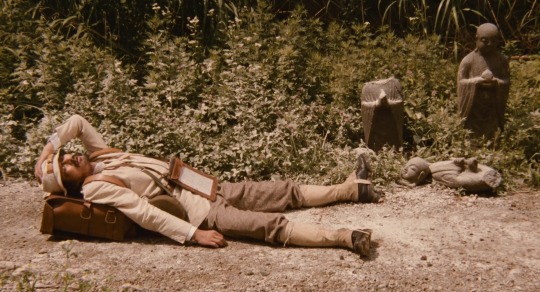

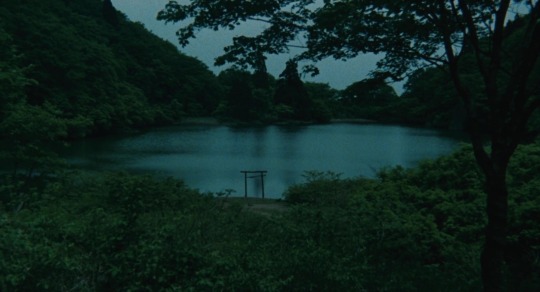
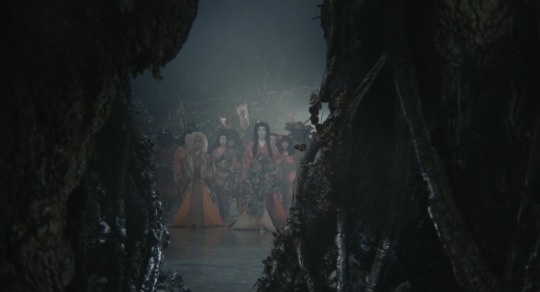
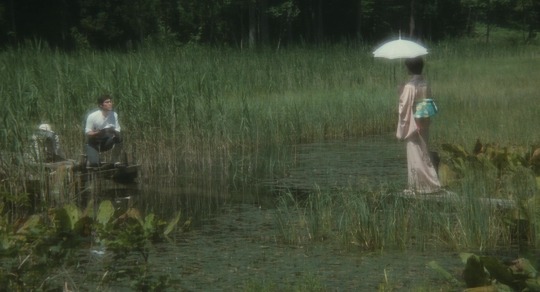
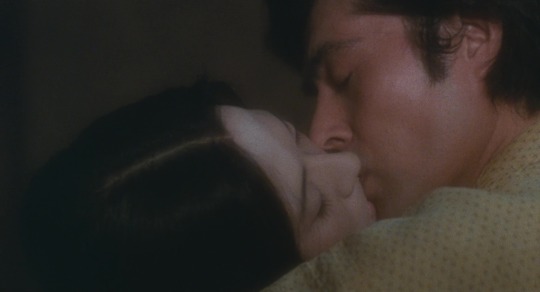
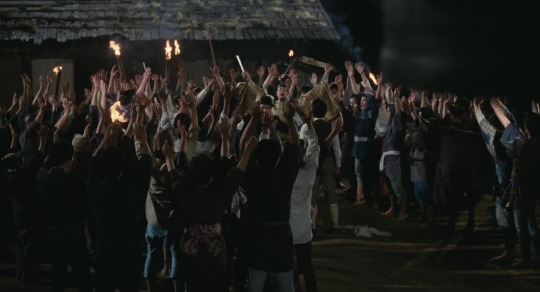

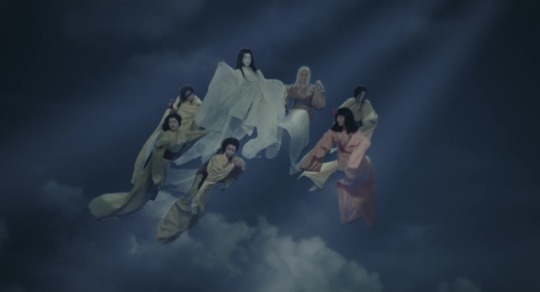
Demon Pond / Yashagaike (1979, Masahiro Shinoda)
夜叉ゲ池 (篠田正浩)
2/12/22
#Demon Pond#Yashagaike#Masahiro Shinoda#Tamasaburo Bando#Go Kato#Tsutomu Yamazaki#Koji Nanbara#Yatsuko Tan'ami#Hisashi Igawa#Norihei Miki#Kyoka Izumi#Juro Kara#Ryunosuke Kaneda#Japanese#70s#stage adaptation#kabuki#folklore#superstition#village#pond#water#drought#spirits#yokai#kaidan#supernatural#old friends#flood#human sacrifice
59 notes
·
View notes
